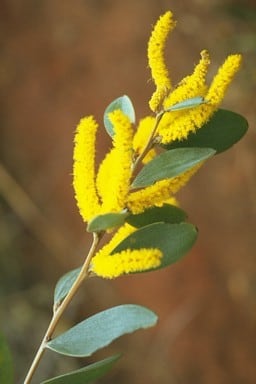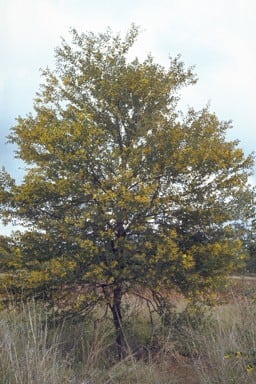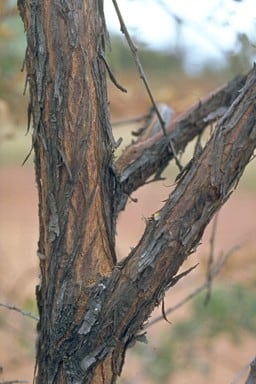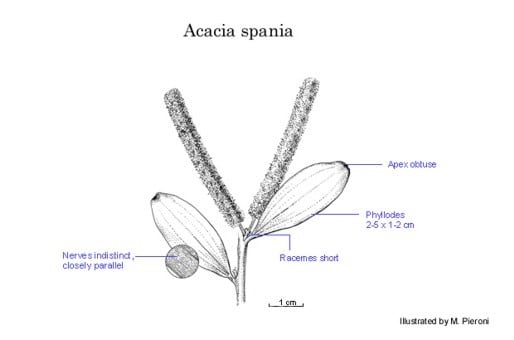Acacia spania Pedley
WATTLE
Acacias of Australia
Family
Fabaceae
Distribution
Known only from two localities near Emerald, Qld.
Description
Tree to 15 m high; single-stemmed, glabrous. Bark ‘ironbark’-type. Branchlets angular, light brown, scurfy. Phyllodes narrowly elliptic to elliptic, flat, straight or sometimes subfalcate, normally 2–5 cm long, 10–20 mm wide, coriaceous, stiff, slightly glaucous, scurfy, with 3–5 main nerves scarcely prominent; minor nerves c. 10 per mm, longitudinal, very inconspicuous, not anastomosing; gland 1, rudimentary, basal, to 1 mm above pulvinus. Inflorescences racemose; raceme axes (1–) 2–3 (–5) mm long. Spikes 2.5–4 cm long. Flowers 5-merous; calyx c. 1 mm long, dissected from c. ½ its length to almost to base, slightly hairy at base and slightly brown scurfy at apex; corolla c. 1.5 mm long, glabrous; ovary glabrous. Pods and seeds unknown.
Phenology
Flowers Aug.
Habitat
It occurs as relatively pure stands in shallow red soil surrounded by open eucalypt woodland.
Specimens
Qld: ‘Fairhill’, c. 70 km by road NE of Emerald, N.Hall 82/2 (NSW); c. 55 km SSE of Yalleroi, N.Hall 82/16 (NSW).
Notes
This species is probably related to A. umbellata and A. striatifolia but it has deeply lobed calyces and generally smaller phyllodes. It is a member of the ‘A. cheelii group’.
FOA Reference
Data derived from Flora of Australia Volumes 11A (2001), 11B (2001) and 12 (1998), products of ABRS, ©Commonwealth of Australia
Author
Minor edits by B.R.Maslin & J.Rogers
Dr M.D.Tindale and Dr P.G.Kodela with the assistance of M.Bedward, S.J.Davies, C.Herscovitch, D.A.Keith and/or D.A.Morrison
This identification key and fact sheets are available as a mobile application:
URL: https://apps.lucidcentral.org/wattle/
© Copyright 2018. All rights reserved.










